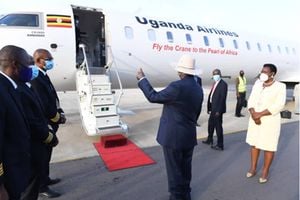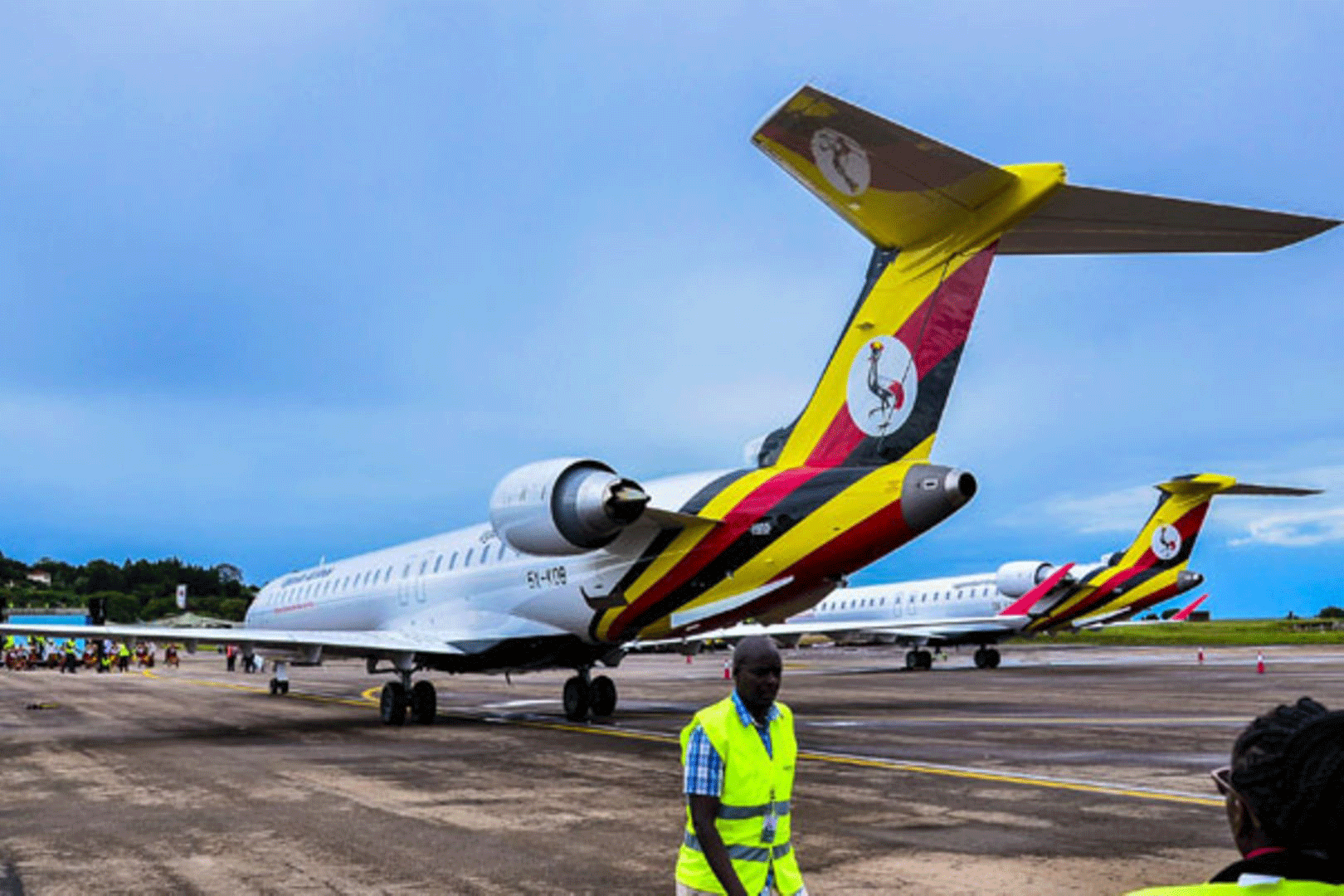
Jenifer Bamuturaki, the chief executive officer of Uganda Airlines during the interview. PHOTO/ALOYSIOUS ATWINE
It is about five years now since the revival of Uganda Airlines. What is there to write home about so far?
Some of the reasons that led to the revival of Uganda Airlines emanated from complaints regarding connectivity, price and travel delays then. We have solved these and many other problems. We have stabilised fares. Before 2019, a flight to Nairobi cost about $800 (Shs2.95 million). Now, on average, it is possible to fly to Nairobi at half that price – which is about $400 (Shs1.5 million). We have also solved the connectivity issue with our direct trips. So, Uganda Airlines shortened the travel time.
I am also happy to tell you that 95 percent of our nearly 517 employees are Ugandans. We also connect and maintain the best customer experience. And this is something we shall always try to perfect because it is about how we serve our customers whether on board or at the call centre.
Don’t forget that we are also domiciled here in Uganda. We have also brought home about $250 million (about Shs920 billion). Many people don’t know that we are also taxpayers. We pay Value Added Tax (VAT), Income tax, and more.
It looks like all is rosy, isn’t that so?
Look, we have had to dig in. For example, in some of the countries we operate in we have found it difficult to repatriate our funds back home. It is a real struggle. Before resolving to unblock our funds, we struggled with Nigeria. We are now resolving a similar situation with Burundi. We had the same issue with India which has since been resolved. Now these are challenges that we have to deal with. We must be able to bring our money back home and deploy it accordingly.
Then there is a regulatory challenge. Securing regulatory approval to operate flights to the Democratic Republic of Congo (DRC) proved a significant challenge, taking years to finalise. Even with a bilateral service agreement, we faced limitations; for instance, we were granted access to only one of our two requested entry points—Kinshasa.
So as we expand we also have to deal with the complexities of the time involved to get into the new routes. The Mumbai route is a good example. Since 2020, we have been trying to get this route. Then Covid-19 struck. As a result, there is a whole new set of rules that has come up before being granted access to the route. Now we are dealing with complaints regarding landing in Mumbai and not in New Delhi because the agreement gives us only one point.
For this to be resolved, government-to-government conversations must happen. But for now, Uganda Airlines is stuck. If it was not for regulatory challenges like this, by now we should have completed agreements and secured between 23 and 24 routes.
Then there is the skillset matter. In aviation, you must match the right skill set to the appropriate job. And this is a huge challenge. We hope to solve this problem by continuous training although I must also mention that aviation has a lot of mandatory training, many of which are not cheap.
So, the important thing is that we relish these challenges because we are here to serve our country, and if that means dealing with these and many other challenges, so be it. Our priority is to do our job to the best of our abilities. By the end of September, we launched the Lusaka route to bring the total number of routes to 16 and we hope to close the year with 20 routes after launching Jeddah, Riyadh, Cape Town, Accra and London.
I can see your work is cut out. But as you go about your work, are there any regrets?
I think few Ugandans understand the nitty-gritty of the aviation industry. And because of that we get judged using yardsticks applied to other parastatals yet we are a unique and highly regulated industry. We have also inherited contracts that have escalated our losses and hiked our costs. A case in point is fuel. Most airlines work directly with the supplier.
For our case, we go through a third party. We would love to work directly with the supplier. This is one of the things we inherited as management. These agreements have automatic renewals with clauses making it difficult to terminate. However, we have an opportunity to renegotiate and see if we can get different suppliers. So all is not lost.
Speak to the expansion plan.
Our growth is linked to the fleet expansion plan. We have the CRJ and the Airbus. So the middle/medium range and the like are part of our 10–year fleet plan. Once we achieve that, we shall move to many more points. We have a route expansion plan that covers most key cities in Africa because we want to improve intra-Africa travel. Moving from one African country to another can be tedious. This shouldn’t be the case. With a suitable fleet, we can expand and reach many places in the continent and even beyond.
So in our fleet plan, we hope to have four mid-range aircraft, two wide - bodies and two freight (cargo) ones. So between now and then, we must do some form of leasing, whether it is a wet lease which is short term, or a dry lease – medium to long term. This is because we must have aircraft to manage the route expansion.

Uganda Airlines planes parked at Entebbe International Airport. By the end of September, Uganda Airlines launched the Lusaka route, bringing the total number of routes to 16. PHOTO/MICHAEL KAKUMIRIZI
Many airlines in Africa have struggled to keep up in the sky. Are you sure you can make it?
Airlines can mitigate the struggling part through interline agreements. This is all about partnerships to support each other. I don’t have to fly all the days – so I can fly a few days and you fly the other days. That way, you minimise your loss on the routes. So that is one way that airlines can work together.
Since 2019, we have carried about 3 million passengers. We have tried to find a unique selling point concentrating on what the passengers want. If I am unable to do that, then I need to communicate. We have setups that can communicate to you in case we cancel or delay.





